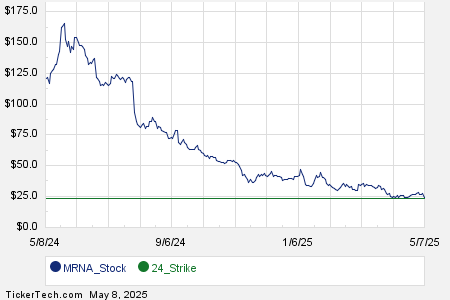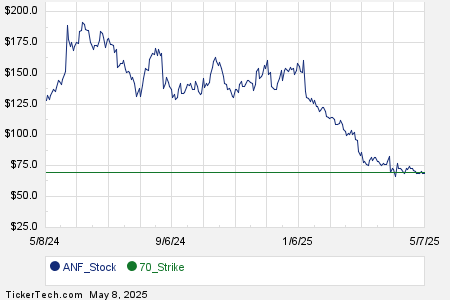Crude Oil and Gasoline Prices Rise Amid International Tensions
On Friday, May WTI crude oil (CLK25) closed up +0.21 (+0.31%), while May RBOB gasoline (RBK25) increased by +0.0026 (+0.12%). These modest gains came amid evolving geopolitical issues and market conditions.
Crude oil prices received support from sanctions imposed by the US on Iranian crude exports on Thursday, which could potentially tighten global oil supplies. However, these gains were tempered due to the dollar index (DXY00) surging to a two-week high. Additionally, weakness in Friday’s stock market raised concerns about the economic outlook and energy demand.
Commodity Bulletin: A comprehensive newsletter for industry professionals and newcomers alike.
The sanctions by the US Treasury Department’s Office of Foreign Assets Control targeted a China-based oil refinery, along with 19 entities and vessels linked to Iranian crude shipping. This move reflects heightened US pressure on Iran, especially following President Trump’s recent letter to Iran’s Supreme Leader, Ali Khamenei, indicating a two-month deadline for a new nuclear deal. Rystad Energy A/S estimates that intensified sanctions could eliminate as much as 1.5 million barrels per day (bpd) of Iranian crude exports from the market, which is a bullish signal for crude pricing.
Moreover, rising tensions in the Middle East are creating additional support for crude oil prices. Recently, Israel resumed airstrikes across Gaza, breaking a nearly two-month ceasefire with Hamas. Prime Minister Netanyahu pledged increased military action to deal with hostilities in the region. Concurrently, the US has initiated airstrikes against Yemen’s Houthi rebels, with Defense Secretary Hegseth promising relentless action until vessel attacks in the Red Sea cease.
Nevertheless, concerns over US tariffs and retaliatory measures may hinder global growth and diminish energy demand, placing downward pressure on crude prices.
Furthermore, increased oil exports from Russia are contributing negatively to crude pricing. Recent data from analytics firm Vortexa indicated that Russian oil product exports reached a year-high level of 2.5 million bpd in February.
Crude prices also felt pressure after OPEC+ announced plans to resume some halted crude output starting in April, adding 138,000 bpd to global supplies. This marks the beginning of monthly increases aimed at reversing a two-year production cut that will cumulatively restore 2.2 million bpd. Initially, production restoration was slated from January to late 2025; however, the full recovery has now been pushed to September 2026. OPEC’s February crude production rose by +320,000 bpd, reaching a 14-month high of 27.35 million bpd.
In a supportive development for crude oil prices, new US sanctions imposed on January 10 targeting Russia’s oil industry could potentially limit global supplies. The measures focus on Gazprom Neft and Surgutneftgas, which collectively exported about 970,000 bpd of Russian crude in the first ten months of 2024, representing approximately 30% of its tanker flow according to Bloomberg data. Additionally, the US targeted associated insurers and traders involved with tanker cargoes. Weekly vessel tracking from Bloomberg revealed a decrease of -30,000 bpd in Russian crude exports, down to 3.45 million bpd for the week ending March 16.
Despite these factors, there are indications that oil demand in China, the world’s largest crude importer, has weakened. Chinese customs data shows that crude imports declined by -1.9% year-over-year to about 553 million metric tons in 2024.
On a more positive note, a reduction in crude oil stored on tankers globally presents a bullish signal for oil prices. Vortexa reported that stationary crude oil on tankers—which had remained idle for at least seven days—fell by -20% week-over-week to 60.89 million barrels for the week ending March 14.
Furthermore, data from the EIA report dated March 14 indicated that US crude oil inventories were -4.8% below the seasonal five-year average, while gasoline inventories were +2.7% above that average. Distillate inventories, in contrast, were -5.9% below the five-year seasonal average. The US crude oil production remained unchanged at 13.573 million bpd for the week ending March 14, slightly below the record high of 13.631 million bpd achieved during the week of December 6.
Adding to the supply-side narrative, Baker Hughes reported a decline in the number of active US oil rigs. For the week ending March 21, active rigs fell by one to a total of 486, still just above the three-year low of 472 rigs recorded on January 24. Over the past two years, the number of US oil rigs has decreased from a four-and-a-half year high of 627 rigs in December 2022.
On the date of publication,
Rich Asplund
did not have (either directly or indirectly) positions in any of the securities mentioned in this article. All information and data in this article is solely for informational purposes. For more information, please view the Barchart Disclosure Policy
here.
More news from Barchart
The views and opinions expressed herein are the views and opinions of the author and do not necessarily reflect those of Nasdaq, Inc.


